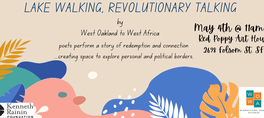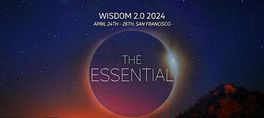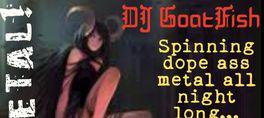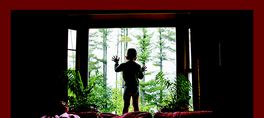Dolby Chadwick Gallery is pleased to announce lost light, featuring the work of Phoenix-based artist Mayme Kratz, on view from June 4—July 3, 2015. Kratz will present wall-mounted works in resin on panel, as well as freestanding resin sculpture, in her first exhibition with the gallery. The title is drawn from Rebecca Solnit's book, A Field Guide to Getting Lost, poetic thoughts about the evocative potential of disassociation from the familiar. Solnit writes, "The world is blue at its edges and in its depths. This blue is the light that got lost." Kratz finds inspiration in the parched and desolate expanses of the Arizona desert, in lonely stretches of sand and the kind of hardy vegetation and animal life that can thrive there, “cactus and creosote bush...scruffy and wild” says the artist. Her regular wanderings yield artifacts that she notices and collects along the way— seeds, bits of plants, deer bones—or even a snake that met an untimely encounter with a car. Overlooked, and certainly left, by most, for Kratz these hold the key to an intimate world of the ephemeral components of life.
As a child growing up in the rural outskirts of San Diego, Kratz developed a kinship with the stark desert light and wide expanses. She also embarked upon a process of biological inquiry, studying, then burying the bodies of birds or small animals—often later to exhume their remains, study them further, and rebury—trying to make sense of it all. Her current process, which includes sealing bones, seeds, or other biological matter in layers of resin, and then sanding back down through the resin to unearth portions of the objects, clearly stems from her childhood fascination. Kratz explores and studies the plant and animal specimens that she collects, breaking them down into smaller pieces, or sawing them into sections, examining them under the microscope.
Her haunting works in resin on panel inhabit the world of painting, as they hang mounted on the wall, but are more sculptural in their depth and physical presence, possessing a weight both physical and metaphysical. With scattered bits of seed pods and animal bones, these works evoke the night sky and the cosmos, while simultaneously recalling the geometric structure of the atom, with its whirling electrons. “I think of the planets orbiting around the sun and of my own journey here on earth. Often when viewing the night sky the things I see through a telescope appear cellular and what I find through my microscope appears stellar.”
With their ability to shift in focus from the minute to the vast, we may ponder the individual objects, viewing the intricate patterns of their interior structure, or contemplate the larger patterns created by her arrangements of these components. Moody hues found in nature—the midnight blue of a dark sky, green-gold of a pond, amber the shade of the sap of trees—form glittering layers encasing the once-living objects within their protection. For Kratz, the circle relates to the cyclical nature of life, the orbits of the planets, the shape of seeds or eggs, the round face of a clock, “a way of measuring time or feeling time.” Circle Dream 56, 2014, part of a series inspired by a dream in which she was herself transformed into a circle, is largely a tranquil green, the shade of a desert cactus. Mexican buckeye seeds forming a ring display a skull-like aspect, with the desiccated appearance one might expect of objects parched in the desert sun. Distant Space #2, 2014, glows in saturated, alizarin red hues; the striated, translucent pigment reveals the panel beneath. Texas mountain laurel seeds, poppy pods, and mesquite seeds are riven in two—their hollow, segmented interior spaces remain a void. Taking the name of the exhibition, Lost Light 1, 2015, in a deep, intense blue, mingles shells and rattlesnake ribs in diffuse, spiraling compositions.
An atmospheric place of uncertainty and potential is central to the work, a place where objects have lost their previous identity and the comfortable reassurance of function, yet the viewer is invited to consider them anew, the residue of a living thing recontextualized as a conduit for new connections and emotions in the viewer. The pieces function as well as memento mori, in the painterly tradition where skulls, flowers, and plant life serve as symbolic reminders of the fleeting passage of life.
“I'm always searching for the light in the objects that I'm collecting and finding a way to celebrate the life or light of that spirit...the 'lost light' is like trying to dig up or uncover something that you know is there...but you may not be able to see initially. It's a way of exploring the transformation that takes place during the process of decay, and finding the beauty in that.” says Kratz.
Mayme Kratz was born in San Diego County, and has made her home in Phoenix, Arizona since 1986. Kratz has had solo exhibitions at the Tuscon Museum of Art and The Tacoma Museum of Glass. She was a visiting artist at Pilchuck Glass School and was awarded a residency at The Museum of Glass in Tacoma, Washington, she has also recently received a mid-career award and exhibition at the Phoenix Museum of Art. Kratz's work is held in many public and private collections throughout the United States.
show less
As a child growing up in the rural outskirts of San Diego, Kratz developed a kinship with the stark desert light and wide expanses. She also embarked upon a process of biological inquiry, studying, then burying the bodies of birds or small animals—often later to exhume their remains, study them further, and rebury—trying to make sense of it all. Her current process, which includes sealing bones, seeds, or other biological matter in layers of resin, and then sanding back down through the resin to unearth portions of the objects, clearly stems from her childhood fascination. Kratz explores and studies the plant and animal specimens that she collects, breaking them down into smaller pieces, or sawing them into sections, examining them under the microscope.
Her haunting works in resin on panel inhabit the world of painting, as they hang mounted on the wall, but are more sculptural in their depth and physical presence, possessing a weight both physical and metaphysical. With scattered bits of seed pods and animal bones, these works evoke the night sky and the cosmos, while simultaneously recalling the geometric structure of the atom, with its whirling electrons. “I think of the planets orbiting around the sun and of my own journey here on earth. Often when viewing the night sky the things I see through a telescope appear cellular and what I find through my microscope appears stellar.”
With their ability to shift in focus from the minute to the vast, we may ponder the individual objects, viewing the intricate patterns of their interior structure, or contemplate the larger patterns created by her arrangements of these components. Moody hues found in nature—the midnight blue of a dark sky, green-gold of a pond, amber the shade of the sap of trees—form glittering layers encasing the once-living objects within their protection. For Kratz, the circle relates to the cyclical nature of life, the orbits of the planets, the shape of seeds or eggs, the round face of a clock, “a way of measuring time or feeling time.” Circle Dream 56, 2014, part of a series inspired by a dream in which she was herself transformed into a circle, is largely a tranquil green, the shade of a desert cactus. Mexican buckeye seeds forming a ring display a skull-like aspect, with the desiccated appearance one might expect of objects parched in the desert sun. Distant Space #2, 2014, glows in saturated, alizarin red hues; the striated, translucent pigment reveals the panel beneath. Texas mountain laurel seeds, poppy pods, and mesquite seeds are riven in two—their hollow, segmented interior spaces remain a void. Taking the name of the exhibition, Lost Light 1, 2015, in a deep, intense blue, mingles shells and rattlesnake ribs in diffuse, spiraling compositions.
An atmospheric place of uncertainty and potential is central to the work, a place where objects have lost their previous identity and the comfortable reassurance of function, yet the viewer is invited to consider them anew, the residue of a living thing recontextualized as a conduit for new connections and emotions in the viewer. The pieces function as well as memento mori, in the painterly tradition where skulls, flowers, and plant life serve as symbolic reminders of the fleeting passage of life.
“I'm always searching for the light in the objects that I'm collecting and finding a way to celebrate the life or light of that spirit...the 'lost light' is like trying to dig up or uncover something that you know is there...but you may not be able to see initially. It's a way of exploring the transformation that takes place during the process of decay, and finding the beauty in that.” says Kratz.
Mayme Kratz was born in San Diego County, and has made her home in Phoenix, Arizona since 1986. Kratz has had solo exhibitions at the Tuscon Museum of Art and The Tacoma Museum of Glass. She was a visiting artist at Pilchuck Glass School and was awarded a residency at The Museum of Glass in Tacoma, Washington, she has also recently received a mid-career award and exhibition at the Phoenix Museum of Art. Kratz's work is held in many public and private collections throughout the United States.
Dolby Chadwick Gallery is pleased to announce lost light, featuring the work of Phoenix-based artist Mayme Kratz, on view from June 4—July 3, 2015. Kratz will present wall-mounted works in resin on panel, as well as freestanding resin sculpture, in her first exhibition with the gallery. The title is drawn from Rebecca Solnit's book, A Field Guide to Getting Lost, poetic thoughts about the evocative potential of disassociation from the familiar. Solnit writes, "The world is blue at its edges and in its depths. This blue is the light that got lost." Kratz finds inspiration in the parched and desolate expanses of the Arizona desert, in lonely stretches of sand and the kind of hardy vegetation and animal life that can thrive there, “cactus and creosote bush...scruffy and wild” says the artist. Her regular wanderings yield artifacts that she notices and collects along the way— seeds, bits of plants, deer bones—or even a snake that met an untimely encounter with a car. Overlooked, and certainly left, by most, for Kratz these hold the key to an intimate world of the ephemeral components of life.
As a child growing up in the rural outskirts of San Diego, Kratz developed a kinship with the stark desert light and wide expanses. She also embarked upon a process of biological inquiry, studying, then burying the bodies of birds or small animals—often later to exhume their remains, study them further, and rebury—trying to make sense of it all. Her current process, which includes sealing bones, seeds, or other biological matter in layers of resin, and then sanding back down through the resin to unearth portions of the objects, clearly stems from her childhood fascination. Kratz explores and studies the plant and animal specimens that she collects, breaking them down into smaller pieces, or sawing them into sections, examining them under the microscope.
Her haunting works in resin on panel inhabit the world of painting, as they hang mounted on the wall, but are more sculptural in their depth and physical presence, possessing a weight both physical and metaphysical. With scattered bits of seed pods and animal bones, these works evoke the night sky and the cosmos, while simultaneously recalling the geometric structure of the atom, with its whirling electrons. “I think of the planets orbiting around the sun and of my own journey here on earth. Often when viewing the night sky the things I see through a telescope appear cellular and what I find through my microscope appears stellar.”
With their ability to shift in focus from the minute to the vast, we may ponder the individual objects, viewing the intricate patterns of their interior structure, or contemplate the larger patterns created by her arrangements of these components. Moody hues found in nature—the midnight blue of a dark sky, green-gold of a pond, amber the shade of the sap of trees—form glittering layers encasing the once-living objects within their protection. For Kratz, the circle relates to the cyclical nature of life, the orbits of the planets, the shape of seeds or eggs, the round face of a clock, “a way of measuring time or feeling time.” Circle Dream 56, 2014, part of a series inspired by a dream in which she was herself transformed into a circle, is largely a tranquil green, the shade of a desert cactus. Mexican buckeye seeds forming a ring display a skull-like aspect, with the desiccated appearance one might expect of objects parched in the desert sun. Distant Space #2, 2014, glows in saturated, alizarin red hues; the striated, translucent pigment reveals the panel beneath. Texas mountain laurel seeds, poppy pods, and mesquite seeds are riven in two—their hollow, segmented interior spaces remain a void. Taking the name of the exhibition, Lost Light 1, 2015, in a deep, intense blue, mingles shells and rattlesnake ribs in diffuse, spiraling compositions.
An atmospheric place of uncertainty and potential is central to the work, a place where objects have lost their previous identity and the comfortable reassurance of function, yet the viewer is invited to consider them anew, the residue of a living thing recontextualized as a conduit for new connections and emotions in the viewer. The pieces function as well as memento mori, in the painterly tradition where skulls, flowers, and plant life serve as symbolic reminders of the fleeting passage of life.
“I'm always searching for the light in the objects that I'm collecting and finding a way to celebrate the life or light of that spirit...the 'lost light' is like trying to dig up or uncover something that you know is there...but you may not be able to see initially. It's a way of exploring the transformation that takes place during the process of decay, and finding the beauty in that.” says Kratz.
Mayme Kratz was born in San Diego County, and has made her home in Phoenix, Arizona since 1986. Kratz has had solo exhibitions at the Tuscon Museum of Art and The Tacoma Museum of Glass. She was a visiting artist at Pilchuck Glass School and was awarded a residency at The Museum of Glass in Tacoma, Washington, she has also recently received a mid-career award and exhibition at the Phoenix Museum of Art. Kratz's work is held in many public and private collections throughout the United States.
read more
As a child growing up in the rural outskirts of San Diego, Kratz developed a kinship with the stark desert light and wide expanses. She also embarked upon a process of biological inquiry, studying, then burying the bodies of birds or small animals—often later to exhume their remains, study them further, and rebury—trying to make sense of it all. Her current process, which includes sealing bones, seeds, or other biological matter in layers of resin, and then sanding back down through the resin to unearth portions of the objects, clearly stems from her childhood fascination. Kratz explores and studies the plant and animal specimens that she collects, breaking them down into smaller pieces, or sawing them into sections, examining them under the microscope.
Her haunting works in resin on panel inhabit the world of painting, as they hang mounted on the wall, but are more sculptural in their depth and physical presence, possessing a weight both physical and metaphysical. With scattered bits of seed pods and animal bones, these works evoke the night sky and the cosmos, while simultaneously recalling the geometric structure of the atom, with its whirling electrons. “I think of the planets orbiting around the sun and of my own journey here on earth. Often when viewing the night sky the things I see through a telescope appear cellular and what I find through my microscope appears stellar.”
With their ability to shift in focus from the minute to the vast, we may ponder the individual objects, viewing the intricate patterns of their interior structure, or contemplate the larger patterns created by her arrangements of these components. Moody hues found in nature—the midnight blue of a dark sky, green-gold of a pond, amber the shade of the sap of trees—form glittering layers encasing the once-living objects within their protection. For Kratz, the circle relates to the cyclical nature of life, the orbits of the planets, the shape of seeds or eggs, the round face of a clock, “a way of measuring time or feeling time.” Circle Dream 56, 2014, part of a series inspired by a dream in which she was herself transformed into a circle, is largely a tranquil green, the shade of a desert cactus. Mexican buckeye seeds forming a ring display a skull-like aspect, with the desiccated appearance one might expect of objects parched in the desert sun. Distant Space #2, 2014, glows in saturated, alizarin red hues; the striated, translucent pigment reveals the panel beneath. Texas mountain laurel seeds, poppy pods, and mesquite seeds are riven in two—their hollow, segmented interior spaces remain a void. Taking the name of the exhibition, Lost Light 1, 2015, in a deep, intense blue, mingles shells and rattlesnake ribs in diffuse, spiraling compositions.
An atmospheric place of uncertainty and potential is central to the work, a place where objects have lost their previous identity and the comfortable reassurance of function, yet the viewer is invited to consider them anew, the residue of a living thing recontextualized as a conduit for new connections and emotions in the viewer. The pieces function as well as memento mori, in the painterly tradition where skulls, flowers, and plant life serve as symbolic reminders of the fleeting passage of life.
“I'm always searching for the light in the objects that I'm collecting and finding a way to celebrate the life or light of that spirit...the 'lost light' is like trying to dig up or uncover something that you know is there...but you may not be able to see initially. It's a way of exploring the transformation that takes place during the process of decay, and finding the beauty in that.” says Kratz.
Mayme Kratz was born in San Diego County, and has made her home in Phoenix, Arizona since 1986. Kratz has had solo exhibitions at the Tuscon Museum of Art and The Tacoma Museum of Glass. She was a visiting artist at Pilchuck Glass School and was awarded a residency at The Museum of Glass in Tacoma, Washington, she has also recently received a mid-career award and exhibition at the Phoenix Museum of Art. Kratz's work is held in many public and private collections throughout the United States.
show less
Date/Times:
Dolby Chadwick Gallery
1 Upcoming Events
210 Post Street, San Francisco, CA 94108
The Best Events
Every Week in Your Inbox
From Our Sponsors
UPCOMING EVENTS
Great suggestion! We'll be in touch.
Event reviewed successfully.









